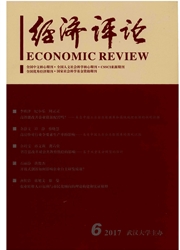

 中文摘要:
中文摘要:
本文在分析外商直接投资(FDI)实证研究文献中有关生产率溢出争论的基础上,运用元回归分析对FDI溢出效应的31篇论文进行实证研究,考察研究者的研究设计、数据特性、溢出方式、时间因素、技术差距、行业属性、劳动力质量及R&D等因素对溢出效应的影响。研究表明,FDI代理变量的形式对结果有显著影响,采用FDI产出值的样本比FDI水平值的溢出效应高,而采用面板数据、行业数据以及R&D和垂直关联研究设计等均得出更高的溢出效应;服务业较制造业FDI有更显著的正溢出效应;FDI的资本与劳动效应不显著。研究还表明,技术差距过大并不利于FDI的吸收与消化;时间均值变量参数为负,表明近十年我国的FDI溢出效益呈下降趋势;模型设定错误可能是引起国内FDI溢出效应结果不同的原因之一。
 英文摘要:
英文摘要:
This paper analyses the empirical literature on technology spillovers from foreign direct investment (FDI) and debates about whether spillovers exist. Our meta- analysis uses a sample of 31 studies to determine what aspects, such as study design, data characteristics,overflow direction, time factors, technological gaps, industry property, quality of labor and R&D and so on, explain spillovers from FDI. Our finding show that some aspects of the empirical methods used, namely, how the presence of FDI is defined. The spillovers of FDI_output are more significant than FDI_level ; using panel or industry, and R&D, Vertical spillover, and so on, are more likely to be significant; service sector FDI Spillover has more significant than manufacturing industry; spillovers of labor and capital is lower. We also discover that technology gap is too big not to conducive to FDI absorption and digestion,the variable parameter of time mean is negative,which showed that FDI spillover to drop nearly 10 years. Results also highlight the possibility that the documented spillover effects from FDI in China may be partly a product of model misspecifieation.
 同期刊论文项目
同期刊论文项目
 同项目期刊论文
同项目期刊论文
 期刊信息
期刊信息
